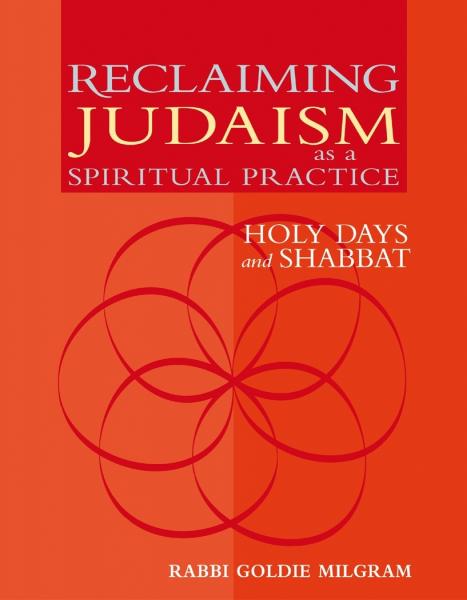
Creating a More Meaningful and Memorable Sukkah Experience
Note: Also attached is a great Sukkkot / Sukkos song by Rabbi Geelah Rayzel Raphael & a video of Rabbi Shefa Gold chanting a verse from the Song of Songs that is a perfect meditation for in your sukkah!
1. Shop at your local Judaica store or online for a lulav and etrog - there is something called a Buddha's Hand Etrog that is quite fascinating to watch for as well. Here's how to make a sukkah. You can also find great, simple, sukkah building kits on-line.
2. Hold an imperiled species sukkah day on one of the intermediate days of sukkot with signs and teachings about disappearing species and specially designated tzedakah box and always, a visit to our local zoo which specializes in breeding and returning species to the wild; also an environmentalism day with signs, things made from recycled materials - one year we hosted as our guests the two people that worked on the recycling truck, they were thrilled!
3. Neighborhood ushpizin (Aramaic for guests) - inviting in unique guests - find up to a minyan (10) of people in the neighborhood who we've never had over to your sukkah and have them for one day or sprinkled through the week; perhaps another day invite over folks from organizations you volunteer for, or from the your children's school or youth group friends, etc. Here's how to do a more traditional ushpizin.
4a. 24 hour meditation in the sukkah --solo or with guests, including sleeping in the sukkah; it's incredibly memorable and can go deeply and be very meaningful (with or without meditation).
A nice verse for contemplation that can be experienced as a Divine message to chant in the Sukkah, and especially on Shabbat is:
"There I will give you my love."
Sham eteyn et dodai lakh [Song of Songs 7:13]
4b. Also consider a Sukkah sleepover with your children - lifetime memories are made of these and it's a tradition!
5. Cool study phrases for a stimulating discussion at a meal or other sukkah gathering or prep.
1. Rabbi David Wolfe-Blank, z"l taught: "A sukkah is like a filter, a huppah is like a lens" What does that mean?
2. Isaiah 4:5-6 God will create upon Mt. Zion, and to those who whom [S]he appears, a cloud and smoke by day, and the shining of a flaming fire by night; overall a glorious huppah. For a sukkah, a shadow (tzeyl) by day from the heat, for a place of refuge, and for a covert from storm and from showers.
3. Psalm 61:5 “O that I might dwell in Your tent forever. Take refuge in the shelter (seter) of Your wings, Selah.”
4. Jonah 4:5-9 Jonah left the city (Nineveh) and sat at the east of the city. He made himself a sukkah there, and sat under it in the shade until he would see what would occur in the city.
5. Babylonian Talmud, Sukkah 37b“For I settled the children of Israel in Sukkot.They were clouds of glory, said Rabbi Eliezar (ben Hyrcanus). Rabbi Akiva said: Real sukkahs, made for them.
6. Lamentations 3:44 You have covered yourself with a cloud, so that no prayer can pass through." with this from Rabbi Fern Feldman: “In the language of light and dark, hester panim is the blocking of the divine light that leaves us, abandoned and alone, in the destructive dark. But there is a flip side to this concept. That is the seter, the shelter, or hiding place. The root samech-tav-resh in Hebrew is used both to refer to the hiding of G-d’s presence from us, and as the divine dwelling place.”
7. Zohar to Vayikra, yeshiva betzila demehimnuta - Sit in the shade of faith “meheimanuta, faith, (is the realm of the sephirot and reality as we know it) Shekhinah absorbs them all with Her wings. She covers the sukkah and those who dwell inside, providing a “shade of faith.” Zohar 3:103a
8. "In Zohar 2:135a Shekhinah herself is called “a sukkah, covering and protecting us.” Dr. Arthur Green
9. Zohar: Shechinah=Sukkah "is the supernal mother who shelters you like a mother[shelters] her children."
6. Dance! When I shadowed Rabbi Lynn Gottlieb several decades ago in New Mexico for a week during rabbinical school, she dressed as a native American eagle (Shechinah imagery) she danced a parade of her community around and into the sukkah -- members of all ages (if I recall correctly) had created round signs on poles depicting those they wanted to invite in from tradition, history, literature, etc. - very special and fun;
7. Make "sukkah people," using scraps of fabric & pipe cleaners and little chachkes like harps and such, in Portland a delightful P'nai Or member makes little figures with the youth and congregants to hang throughout the sukkah -- we do garments reflecting all the countries Jewish have live in and some rock and roll sukkah people, etc.
8. The first folks I ever saw use colorful lights in a sukkah were Arthur Green & Kathy Green, z"l, we have begun to collect appropriate harvest lights - like chili pepper ones and incorporating them into our sukkah.
9. Have a singles night in the sukkah and help people across the range of gender orienation meet each other--it's important to do! And it's a mitzvah to remember the widow(er), so steadily include those you know in your family sukkah time as well, it's often lonely out there!
9. Have a couples night in the sukkah and discuss the book The Noticer and use one of the sets of encoupled ushpizin people, the seven traditional male guests are: Abraham, Isaac, Jacob, Joseph, Moses, Aaron and David. Reb Menachem Azariah included female figures, the seven prophetesses: Sarah, Miriam, Deborah, Hannah, Abigail, Hulda, and Esther. On each day, the first names drop back in the list and the next pair is said to lead in the others.
10. It's traditional sit in and when possible eat your meals in the sukkah every day. Rabbi Geelah Rayzel Raphael has a wonderful ushpizin song - we also invite guests to bring a lyric for it of their own each year
11. You might give thought having separate women (and daughters) and men's (and sons) nights perhaps using the etrog as the ovarian/female contemplative symbol and lulav as the phallic/male symbol- what new ideas are you pregnant with or hopes are you incubating at this point in your life? and for men, perhaps shaking the lulav with the same question or asking with the lulav - when you shake the tree of your life what comes out for supportive discussion? Here's a great sukkot resource re intimacy from Jewish Women International.
12. It's customary to have elders teach from Kohelet, “Ecclesiastes, on the Shabbat of Sukkot - Rami Shapiro's interpretative translation, imho, is quite wonderful.
13. Everyone brings their telescopes night and/or cosmos or astrology study in the sukkah. Part of fulfilling the mitzvah of yira, is experiencing the awesome/fearsomeness of creation Judaism and one must be able to see the stars and sky through one's sukkah. A great night for astronomy. Also, astrology and Judaism has a very long co-history. The traditional blessings themselves include the word z'man, which means when the array of the stars in the sky are auspicious for a particular quality - on sukkot - simchateinu - our joy!
Blessings for a happy holiday - chag sameach!

Learn more about Jewish holy days
in Reclaiming Judaism as a Spiritual Practice;
Holy Days and Shabbat by
Rabbi Goldie Milgram